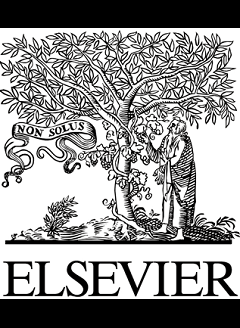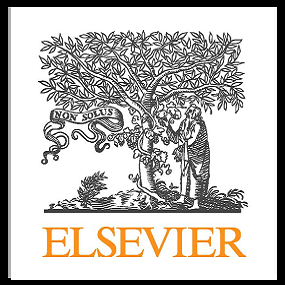مقاله ترجمه شده درباره بررسی اثر انحراف قطار بر سایش و تنش تماسی چرخ و ریل

مشخصات مقاله:
عنوان فارسی مقاله:
بررسی اثر انحراف قطار بر سایش و تنش تماسی چرخ و ریل
عنوان انگلیسی مقاله:
An investigation into the effect of train curving on wear and contact stresses of wheel and rail
کلمات کلیدی مقاله:
ریل، سایش، تنش تماسی، وسیله نقلیه ریلی، خط آهن قوسدار، مکانیک تماس غلتشی، مکانیک سازه
مناسب برای رشته های دانشگاهی زیر:
مهندسی مکانیک و فیزیک
مناسب برای گرایش های دانشگاهی زیر:
مکانیک خودرو و فیزیک کاربردی
وضعیت مقاله انگلیسی و ترجمه:
مقاله انگلیسی را میتوانید به صورت رایگان با فرمت PDF از باکس زیر دانلود نمایید. ترجمه این مقاله با فرمت WORD – DOC آماده خریداری و دانلود آنی میباشد.
فهرست مطالب:
چکیده
1) مقدمه
2) مدل محاسبه سایش ریل و تنشهای تماسی
۲.۱ توضیحات کلی
2.2 مدل وسیله نقلیه ریلی و خط آهن قوسدار
2.2.1 توضیحات مدل وسیله نقلیه
2.2.2 توضیحات مدل خطآهن
2.2.3 مدل سطح تماس چرخ و ریل
2.2.4 شرایط مرزی و اولیه سیستم خط آهن
2.2.5 مدل محاسباتی هندسه سطح تماس چرخ و ریل
2.3 نظریه تماس غلتشی چرخ و ریل
2.4 مدل سایش ماده سازنده ریل
2.5 بحث راجع به مدلهای مشابه موجود
3) اثر سرعت قوسگیری
3.2 اثر شیب عرضی خط آهن قوسدار و شیب عرضی ریل
4) نتیجهگیری
قسمتی از مقاله انگلیسی و ترجمه آن:
1. Introduction
The wear and rolling contact fatigue of wheels and rails cost China railways about 1.2 billions US dollars per year. The wear and fatigue occur predominantly on sharp curved tracks, joint rails and turnouts [1,2]. When a wheel rolls over a rail with a large slide, a large amount of material on the wheel or rail running surface is removed due to larger contact stresses and high temperature [3]. Fig. 1a and b illustrates, respectively, severe side wear and severe corrugation occurred on high curved rails. Such wear causes the great change of rail profile and, therefore, strongly affects the running behavior of railway vehicles, such as motion stability, riding comfort and derailment safety. The wear amount and the present shape of the rail in service are the key criteria for rail replacement at railway sites. However, the wear is often utilized to extend the use life of the rails which have small cracks on their running surfaces at railway sites. As well known, the rail has two types of damage: cracks and wear. Proper wear rate occurring on the rail running surface is able to eliminate small existing cracks or suppress the growth of existing cracks efficiently [4]. According to the mechanism many railway companies on the world developed the optimum techniques of rail grinding [5–7]. For instance, MRS in Brazil applied the advanced technique of rail grinding to the maintenance of the heavy haul track, and the use life of rails used in the heavy haul increased doubly [8]. Therefore, railway companies are much concerned with the studies and treatment of rail wear. Rail wear studies are very complicated, and involve many subjects, such as structural coupling dynamics of railway vehicle and track, rolling contact mechanics, tribology, metallurgy, and numerical method.
1) مقدمه
سایش و خستگی در سطح تماس غلتشی چرخها و ریلها هر ساله مبلغی بالغ بر حدود ۱.۲ میلیارد دلار برای چین هزینه دارند. سایش و خستگی عمدتاً در خطوط آهن قوسدار تندشیب، ریلهای لولایی و خط برگردانها اتفاق میافتد (۱،۲). زمانی که چرخی روی ریل با لغزش زیاد غلت میخورد، حجم زیادی از ماده اولیه چرخ روی چرخ یا سطح حرکت ریل به خاطر تنشهای تماسی بیشتر و دمای بالا جابجا میشود (۳). اشکال ۱.الف و ب به ترتیب سایش جانبی شدید و موجدارشدگی شدیدی که در ریلهای قوسدار فوقانی رخ داده است نشان میدهند. چنین سایشی سبب تغییر زیاد پروفیل ریل میشود و بهمین دلیل تأثیر شدیدی روی چگونگی حرکت وسیله نقلیه ریلی مانند پایداری حرکتی، راحتی در حین حرکت و ایمنی خروج از ریل میگذارد. میزان سایش و شکل فعلی ریل در حال استفاده از معیارهای کلیدی تعویض ریل در سایتهای راهآهن محسوب میشوند. با این حال، اغلب برای افزایش عمر مصرفی ریلهایی که در سطوح حرکتشان در سایتهای راهآهن ترکهای ریزی دارند از معیار سایش استفاده میشود. همانطور که مشخص است، ریل در معرض دو نوع آسیب قرار میگیرد: ترکخوردگی و سایش.

